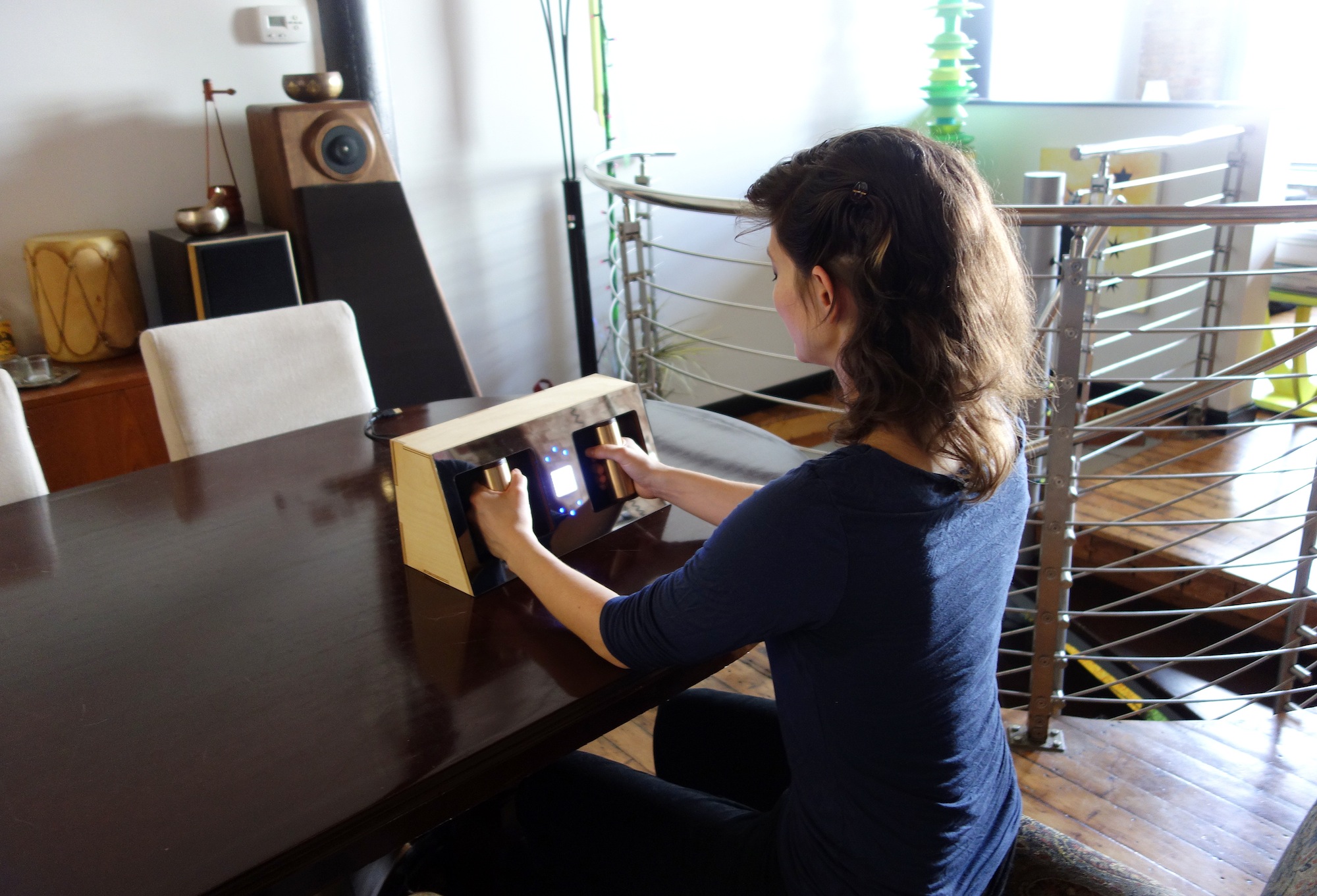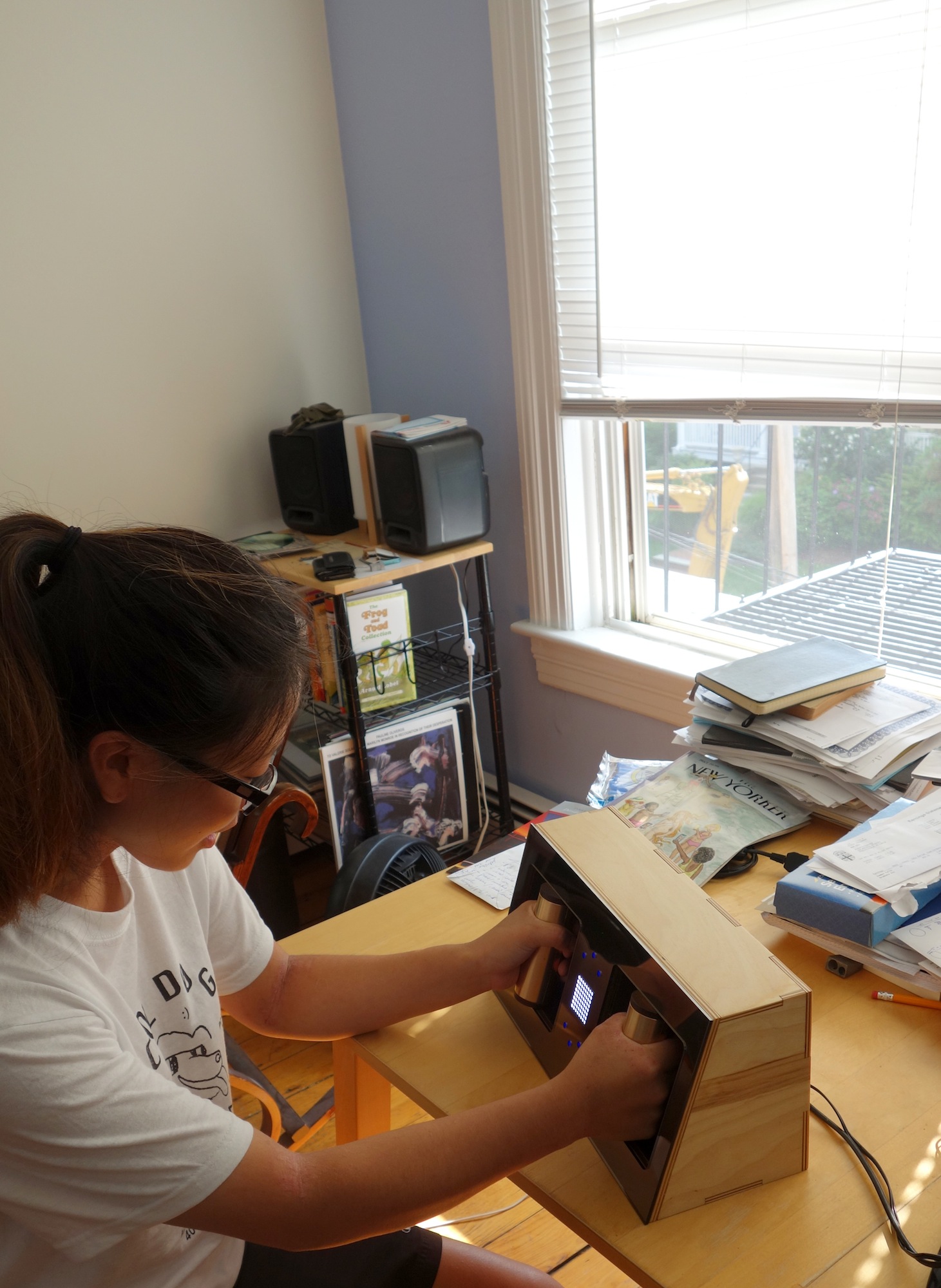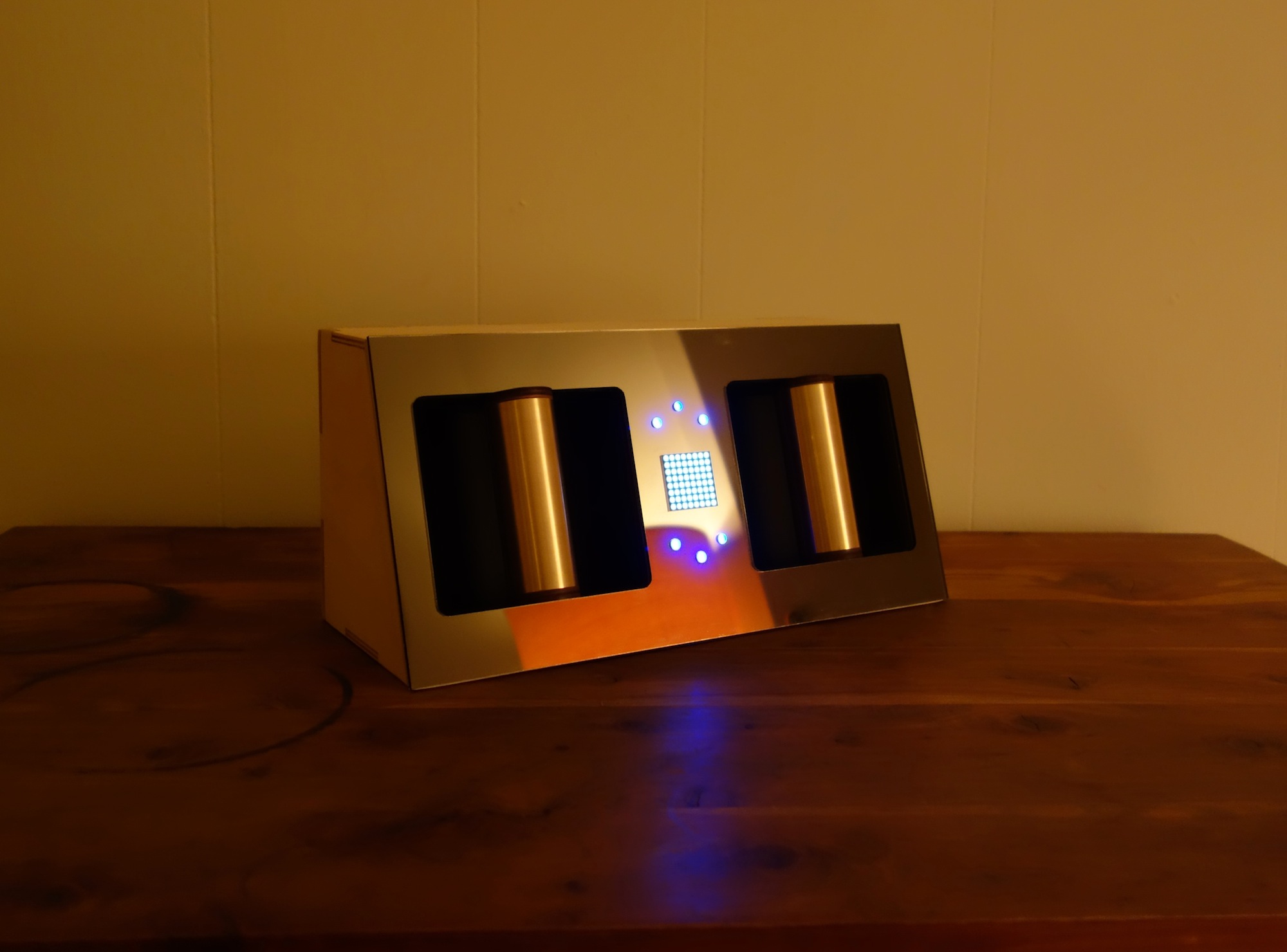
Empathy Box
14x7x6", wood, bronze, acrylic, heaters, electronics
2014
The Empathy Box is a networked appliance that connects many anonymous people through shared warmth.
"An empathy box," he said, stammering in his excitement, "is the most personal possession you have. It's an extension of your body; it's the way you touch other humans, it's the way you stop being alone." - Philip K. Dick, Do Androids Dream of Electric Sheep?
"I had hold of the handles of the box today and it overcame my depression a little—just a little...I felt everyone else, all over the world, all who had fused at the same time." - Philip K. Dick, Do Androids Dream of Electric Sheep?
"An empathy box," he said, stammering in his excitement, "is the most personal possession you have. It's an extension of your body; it's the way you touch other humans, it's the way you stop being alone." - Philip K. Dick, Do Androids Dream of Electric Sheep?
"I had hold of the handles of the box today and it overcame my depression a little—just a little...I felt everyone else, all over the world, all who had fused at the same time." - Philip K. Dick, Do Androids Dream of Electric Sheep?
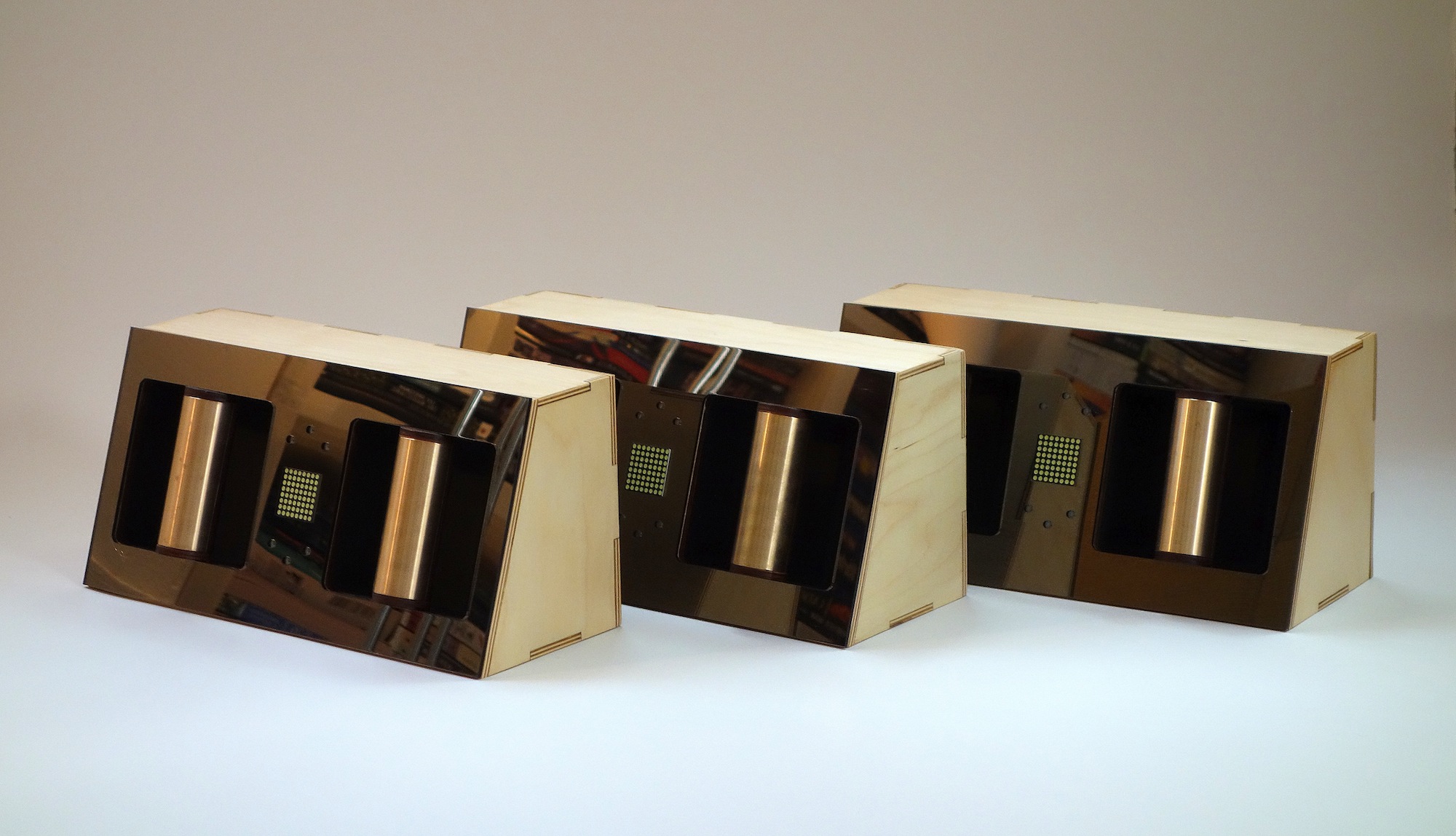

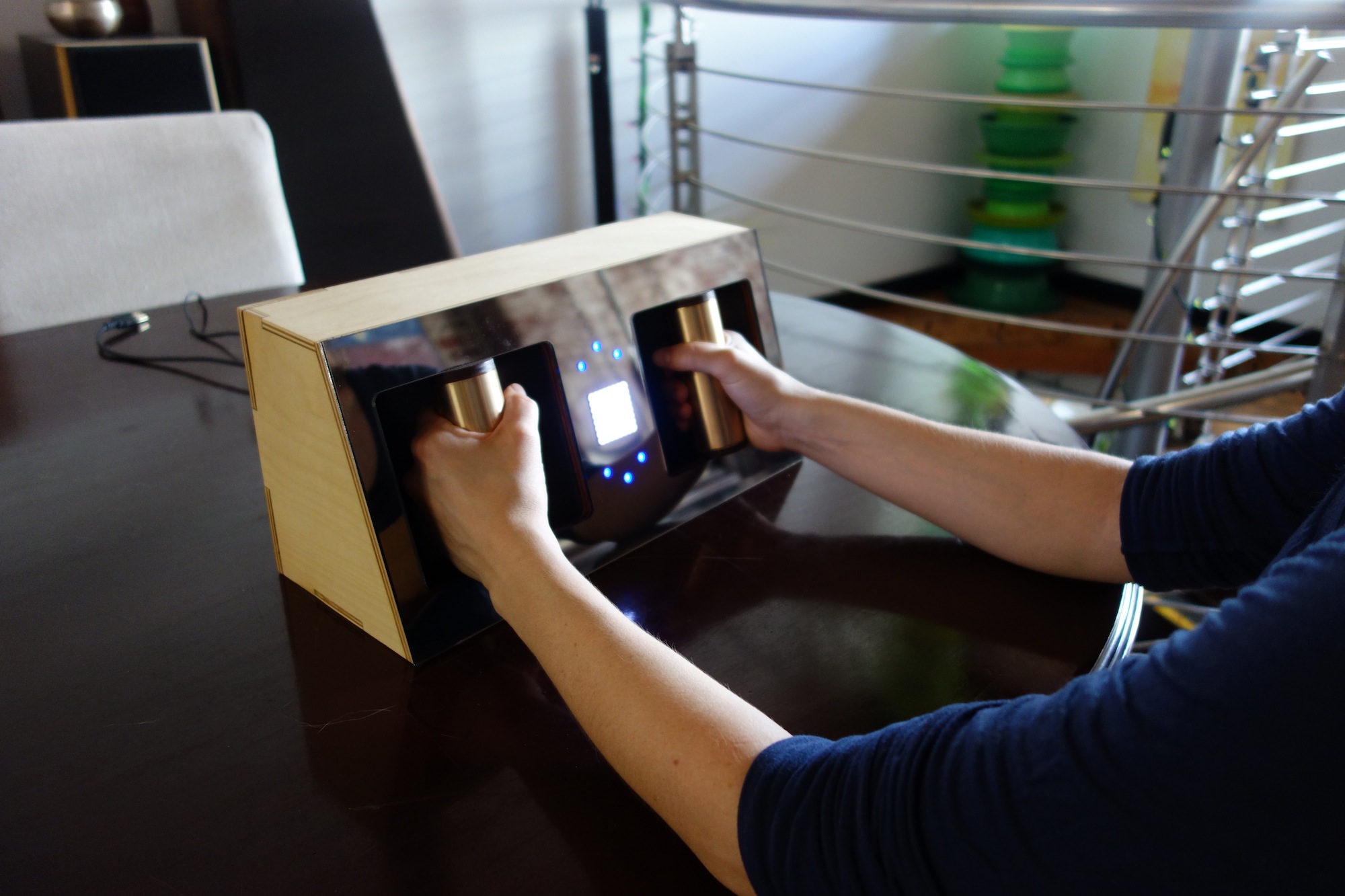
With the invention of computers and the internet, we experienced an explosion of new connective technologies that promised to save us time so that we could better relax and enjoy life. Instead, people are more overwhelmed and distracted than ever. These same technologies were supposed to improve our relationships and help us keep in touch, and yet, people are becoming increasingly isolated. This is the inadvertent result of designing technology with the goal of interactions being efficient rather than interactions being meaningful. Predominant connective technologies do not adequately consider how small design choices shape our mental processes and affect our emotions. When people’s interactions with each other are mediated through a technology, mental narratives arise about themselves, the people on the other end, and the technology itself. In my research, I investigate how interfaces structure our thoughts and, as a result, behavior, and I examine how this power can be harnessed to improve mental and physical well-being.
While at MIT, I encountered a large body of research on how the perceived sense of loneliness, not actually physically being alone, has astounding health consequences for a significant portion of the population. Like Sherry Turkle, MIT researcher and author of Alone Together, I am concerned that current technologies undermine human connection and empathy, and I focused my thesis research on how technology can be used to alleviate perceived feelings of loneliness.
Recent discoveries in the field of cognitive science force us reconsider many of our most fundamental beliefs about the self. In particular, I looked at how George Lakoff’s theory of the embodied mind, which is the understanding that the majority of thought is unconscious and experienced through the body, can be used to design better interfaces. Lakoff explains that human beings rely on primary metaphors to understand abstract concepts. Primary metaphors arise from the conflation of sensorimotor and subjective experiences during early childhood because the corresponding neural networks become linked. Thus, primary metaphors can be used to both reinforce or undermine our subjective experiences. This suggests that designing for the embodied mind and leveraging primary metaphors such as “Affection is Warmth” have the potential to enhance our sense of connection with others and may be particularly therapeutic for the lonely. With the understanding that the aesthetic qualities of a technology greatly influence its effectiveness, the perspective of an artist, which involves expertly combining aesthetics and context to evoke meaning, is invaluable in the innovation of new technologies that interface with the self or that mediate relationships between people.
To explore these ideas, I designed and built two functional devices: the Empathy Box, a tabletop appliance inspired by Do Androids Dream of Electric Sheep? by Philip K. Dick; and the Empathy Amulet, a wearable version of the aforementioned appliance. Both devices use shared physical warmth as a way to cultivate empathy and a novel sense of connection with anonymous others. The devices encourage their users to make a deliberate and generous choice to invest their time and energy in connection with strangers, and they incorporate reciprocity into their design, such that helping oneself means helping other people. The Empathy Box explores synchronous connection, while the Empathy Amulet uses asynchronous connection allowing the user experience the shared warmth either consciously or unconsciously.
My full MIT thesis as a PDF
